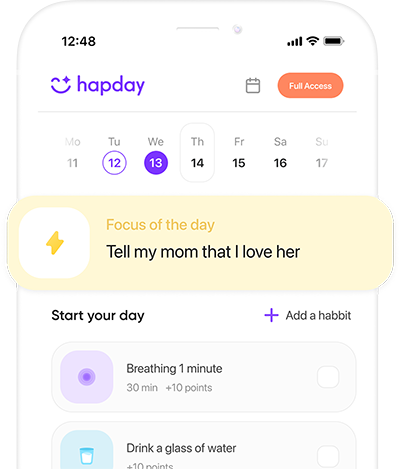Table of Contents
- Understanding Burnout
- The Science Behind Burnout
- Breaking Free from Burnout: Expert Tips
- Expert Insights on Burnout Prevention
- Conclusion
- References
Understanding Burnout
What is Burnout?
You’ve felt it. We all have—those aching waves of mental, physical, and emotional exhaustion that seem to wrap tightly around our daily routines. The World Health Organization has marked burnout as serious business, classifying it as an occupational phenomenon born from relentless workplace stress. How does one spot it? Well, burnout often manifests in feelings of unending helplessness, a creeping cynicism, and that dreaded sense of getting nowhere fast.
Signs and Symptoms
Knowledge is power, right? Recognizing the symptoms early on is crucial. Common signs include:
- Emotional Exhaustion: The tank’s empty—you’re just running on fumes.
- Depersonalization: You might start seeing colleagues more as obstacles rather than allies.
- Reduced Performance: That sharp decline in feeling motivated? It’s a key red flag.
Research from Deloitte throws some hard numbers at us: a staggering 77% of professionals say they’ve faced burnout where they work, with 91% hinting it’s a real wrench in the quality of their labor.
The Science Behind Burnout
Burnout isn’t just a buzzword crafted for dramatic effect; its roots plunge deeply into our physiological and psychological landscapes. Stress—the chronic kind—ups cortisol, our stress hormone. This does more than just raise your heart rate; it begins chipping away at cognitive function and can dampen the immune system. Articles in Psychoneuroendocrinology reveal pressing details—burnout doesn’t just weary minds, it can change brain structure, particularly areas governing emotions and memories. Alarmingly, burnout poses a marked risk for heart troubles, too. Who could imagine that relentless stress might push heart disease odds up by 23%? But that’s the stark truth from studies like those published in The Lancet.
Breaking Free from Burnout: Expert Tips
1. Prioritize Self-Care
Foundation matters, doesn’t it? And for easing burnout, self-care is foundational. It’s about consciously prioritizing all parts of you—mental, physical, and emotional. Notable strategies? Try these:
a) Mindfulness and Meditation
Mindfulness can work wonders, acting as a balm to frayed nerves. A piece in Health Psychology Review lauds mindfulness-based interventions for shrinking stress. Techniques like meditation and deep breathing hold the power to lower that revengeful cortisol.
b) Regular Exercise
Move a muscle, change a mood—there’s truth in that fitness mantra. Exercise floods us with endorphins, nature’s own mood lifters. Even short, vigorous bursts offer relief from anxiety and depression, or so the American Psychological Association tells us.
2. Set Boundaries
Setting boundaries might sound like a modern catchphrase, but it’s vital for staving off burnout, both within workplaces and personal spaces.
a) Saying No
No—such a small word, yet so powerful! A University of California study points out that learning to say it might just buffer against stress and the desolation of depression.
b) Digital Detox
Living life online intensifies burnout. Regular digital breaks can refresh and calm. The Journal of Clinical Psychology suggests less screen time could elevate well-being and diminish anxiety.
3. Seek Professional Support
Admitting we can’t always go it alone is a step towards healing. Therapists provide keys to coping, with therapies like CBT actively helping to transmute negative thought patterns into healthful ones.
4. Foster Connections
Human beings are social animals. Social support acts like a sturdy lifeboat amid stormy seas. A warm chat with friends or family? Such social interactions bolster mental health. Studies in The Journal of Health and Social Behavior back this up—they view strong social networks as fortifications against stress waves.
5. Embrace a Balanced Lifestyle
Life swings on a pendulum, doesn’t it? Striking a work-life balance is pivotal.
a) Time Management
Smart use of time courts harmony. Scheduling apps can swiftly guide you to allocate time for both bliss and duty.
b) Hobbies and Interests
Challenged to break free from work chains? Turn to hobbies. A tune from the piano or the simple joy of gardening might clear the mind better than you’d think.
6. Reevaluate Goals and Expectations
It’s worth pausing to revisit personal goals—are they realistic? Or do they merely extend perfectionism’s destructive reign? Easing expectations can lighten the mental load.
Expert Insights on Burnout Prevention
Interviews with Experts:
Dr. Lisa Williams, clinical psychologist: “Staying clear of burnout speaks to balance—reflecting regularly and setting realistic goals is key.”
Dr. John Thomas, stress management expert: “Staying connected socially and carving time for meaningful pursuits acts as a protective shield against stress and burnout.”
Conclusion
Conquering burnout demands a multi-layered approach, one that aligns with individual needs. Highlight self-care, guard time, call for support, and instill a balanced lifestyle. That’s the path to dispelling stress and regaining control. In implementing these measures, the cycle of burnout can indeed be broken.
Explore the Hapday app to reinforce your mental health. Step forward today toward stress relief and burnout prevention. Discover Hapday
References
- World Health Organization. (2019). Burn-out an “Occupational Phenomenon”: International Classification of Diseases. Retrieved from WHO.
- Psychoneuroendocrinology. (2020). Burnout and the Brain: A Study on Changes in Brain Structure. Retrieved from ScienceDirect.
- The Lancet. (2015). Job Strain as a Risk Factor for Coronary Heart Disease. Retrieved from The Lancet.
- Health Psychology Review. (2018). Mindfulness-Based Interventions and Stress Reduction. Retrieved from Taylor & Francis Online.
- American Psychological Association. (2021). Exercise for Stress and Anxiety. Retrieved from APA.
- University of California. (2020). The Impact of Saying No: Stress and Well-being. Retrieved from UC.
- Journal of Clinical Psychology. (2021). Social Media Use and Mood Disorders. Retrieved from Wiley Online Library.
- The Journal of Health and Social Behavior. (2019). Social Support and Mental Health. Retrieved from SAGE Journals.

